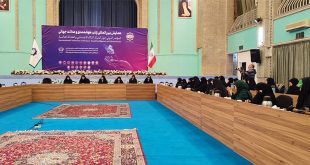Though, the Muharram mourning in Kashmir have a history of being targeted by many intolerant rulers but the struggle by all awakened sections of the society ceased the practice from being faded away.
Ijtihadnetwork: The Kashmir under the Indian control is undergoing yet another political turmoil after its, already eroded, special status was abrogated by the Indian parliament and divided it into two territories to be directly put under the rule of central government. Kashmir, in the history of its turmoil, is currently in its toughest phase and the fear for future and deep dissent can resort the populace to violence. Thus, the abrogation of the status is believed to increase animosity and antagonism in the region for which the region is under heavy military control. The policy of forced restrictions is being followed and communication is clogged. The human interaction is also restricted to avoid collective protests against the government measures.
The restrictions are extended to religious gatherings like prayers, Friday prayers, Eid prayers at many places and major mosques like Jamia Masjid and Imambaras are looked down by the forces. The month of Muharram started on the first of September this year and the mourning too was restricted. The religious and political leaders were taken under custody or confined at their respective homes. No political or religious organisation was allowed to function and organise the mourning programmes. Though, women trained in the Muharram programmes played critical role in smashing the restrictions on the Muharram programmes amidst of the heavy deployment of the armed forces.
The Muharram in Kashmir is an old and unique practice and has become an important component of the popular culture and identity of the region. It is usually observed as MarsiKhani, wherein a Zakir recites the poetry about Karbala in classic Kashmiri language. Secondly, the Majlis is organised where an Islamic scholar illuminates theological, socio-ideological and historical aspects of the happening. Finally, the mourning processions are also taken out on various squares and road, wherein people recite Urdu or Kashmiri Noha. These practices are performed and participated both by males and females in segregated gatherings. Though, the females also have access to listen to the scholars from the female corridors.
The message of Karbala is very vast and in brief, it distinguishes legitimacy from illegitimacy and dignity from perpetration and soon. Many scholars have written on the message of Karbala and the day of Ahura and noted that the tyrant Yazid represents evil and Aba Abdillah Imam Hussain (p.b.u.h) represents human emancipation and dignity. The message of Karbala emphasis over the giving the legitimate rights and ensuring justice. It constitutes a paradigm that is against oppression of any kind and unveils the evil layer by layer and highlights its components. The message stresses over the human agency as a tool against evil and not for individual benefit but for humanity as whole and fills a human soul with empathy.
Though, the Muharram mourning in Kashmir have a history of being targeted by many intolerant rulers but the struggle by all awakened sections of the society ceased the practice from being faded away. The Islamic awakening played a vital role in observing the practice in the region freely. Though, the state has imposed restrictions on various mourning procession from last many decades. But, today on this political venture the ban is intensified and extended to too many levels. Apart from marsiyagoyi off the sound system and in a minimal manner is allowed at a few places but majalis of prominent scholars and mourning procession are still suspended by arrest of the scholars and restrictions on the roads.
However, the important message of Karbala and the day of Ashura cannot be stopped from inspiring the humans and revolutionaries. The agential Shia women confronted the forces and amidst of shelling confronted the forces and attempted to take out the processions and at various places were successful also. The spirit of the youth was that our Imam stood against oppression so do we. Since, the heavy crackdown is on making opinions and every person is being surveillanced the forces, we do not know how many more youth are taken into custody after Ashura.
 Ijtihad Network Being Wise and Faithful Muslim in the Contemporary World
Ijtihad Network Being Wise and Faithful Muslim in the Contemporary World
